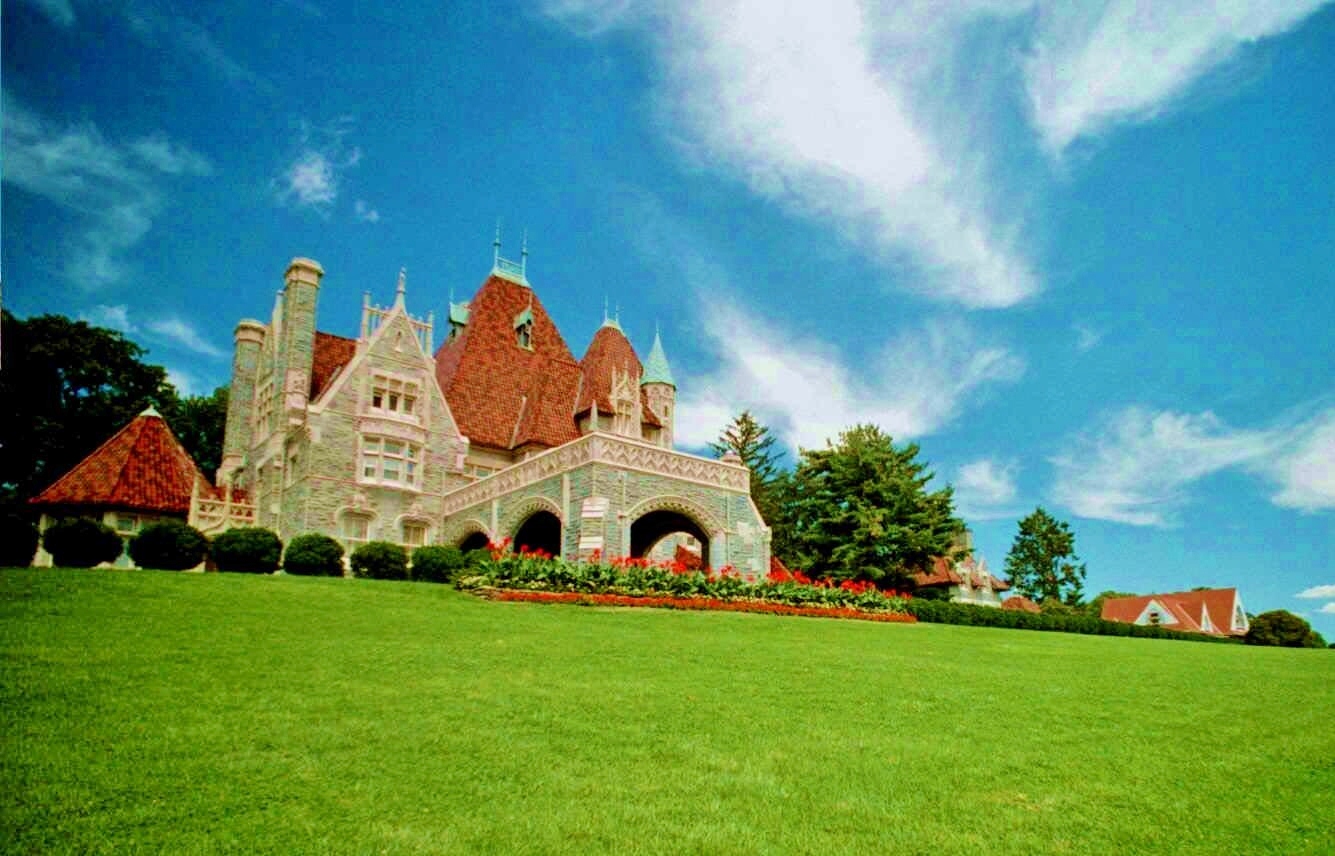

Woodmont, the 73 acre estate in Gladwyne, Pennsylvania. used as a country home by Father and Mother Divine, is owned by Palace Mission, Inc., one of the churches of the Peace Mission Movement of which Father Divine is the Founder, Bishop and Pastor.
In 1953, FATHER DIVINE dedicated and consecrated the estate as The Mount of the House of the Lord. which HE had previously described as "the repetition of history . . .
'As it was with the building of the Temple of the LORD in Jerusalem, in Mount Moriah, so it is in the rebuilding of the Temple of the LORD in Philadelphia . . in Woodmont.'
according to the biblical prophecy of Isaiah 2:2. 3 and Micah 4:1, 2.


During Open House, to visit the Shrine and/or tour the Manor House Modest dress is required. No shorts, ladies should wear a skirt.
In 1929 Woodmont was purchased by J. Hector McNeal, corporation lawyer and noted horse man. It was he who modernized it considerably. In later years, as an ardent admirer of the Work of Father Divine, Mrs. McNeal expressed the desire that Woodmont would some day come into the possession of followers of Father Divine and in 1952, after her demise. the property was placed on sale by executors of the estate and the Palace Mission Church purchased it for $75,000 cash.
One year later, on September 10, 11, 12, 1953, after extensive restoration, Woodmont, the estate once called
'one of the most magnificent estates in Pennsylvania'
(Philadelphia a symbol of the Age of Elegance, when the American tycoon became her aristocracy.)
was opened to the people. Woodmont moved into another era, the Age of Peace and Brotherhood under the Fatherhood of God.
Approximately 16 miles from Philadelphia Woodmont overlooks the bend in the Schuylkill River and Conshohocken at an elevation of 475 feet above tidewater. From the upper rooms the view is unobstructed for 15 miles around.
Woodmont has two main entrance gates on Woodmont Road. "Woodmont" and the dates "1891" and "1953" are cut into stone pillars at the gate. There is also an entrance gate on Genko Lane. Both gates have gate houses.
Aside from the 32-room French Gothic manor house and the beautiful Shrine to Life, there are two smaller buildings along Chapel Drive which leads to the mansion. A u-shaped complex, the former carriage house and stables, has been converted into a unique Reception Center, Harmony House and garages. A guest cottage and Welcome Center are located where the greenhouses used to be and the greenhouse has been relocated near the Library. A play area on the west lawns includes a 25 by 55-foot swimming pool, with 2 bathhouses .
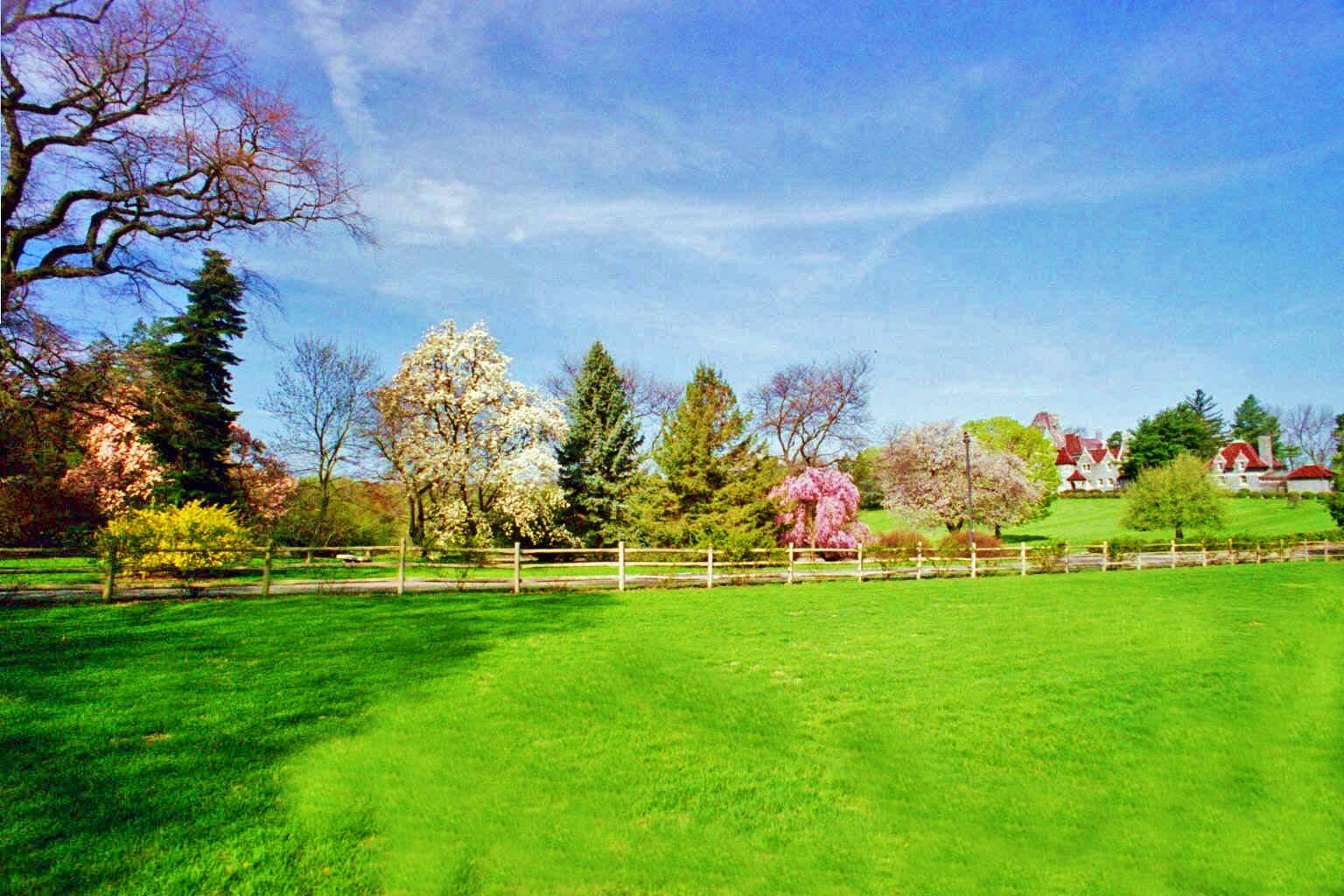
The 73 acres at Woodmont are a maze of formal and terraced gardens, rose and border gardens, rock gardens and wildflower gardens. Wooded hills, ponds, lakes and streams provide a natural bird and animal sanctuary that delights the nature lover. Annual and perennial plants, used in profusion in the gardens amounting to thousands each year, are seeded and grown in the greenhouses, as are the vegetable plants for the vegetable gardens and some of the shrubs used on the estate. Roses are grown to provide cut flowers during the winter months, in the greenhouse which is also used to care for house plants,
The House of the Lord
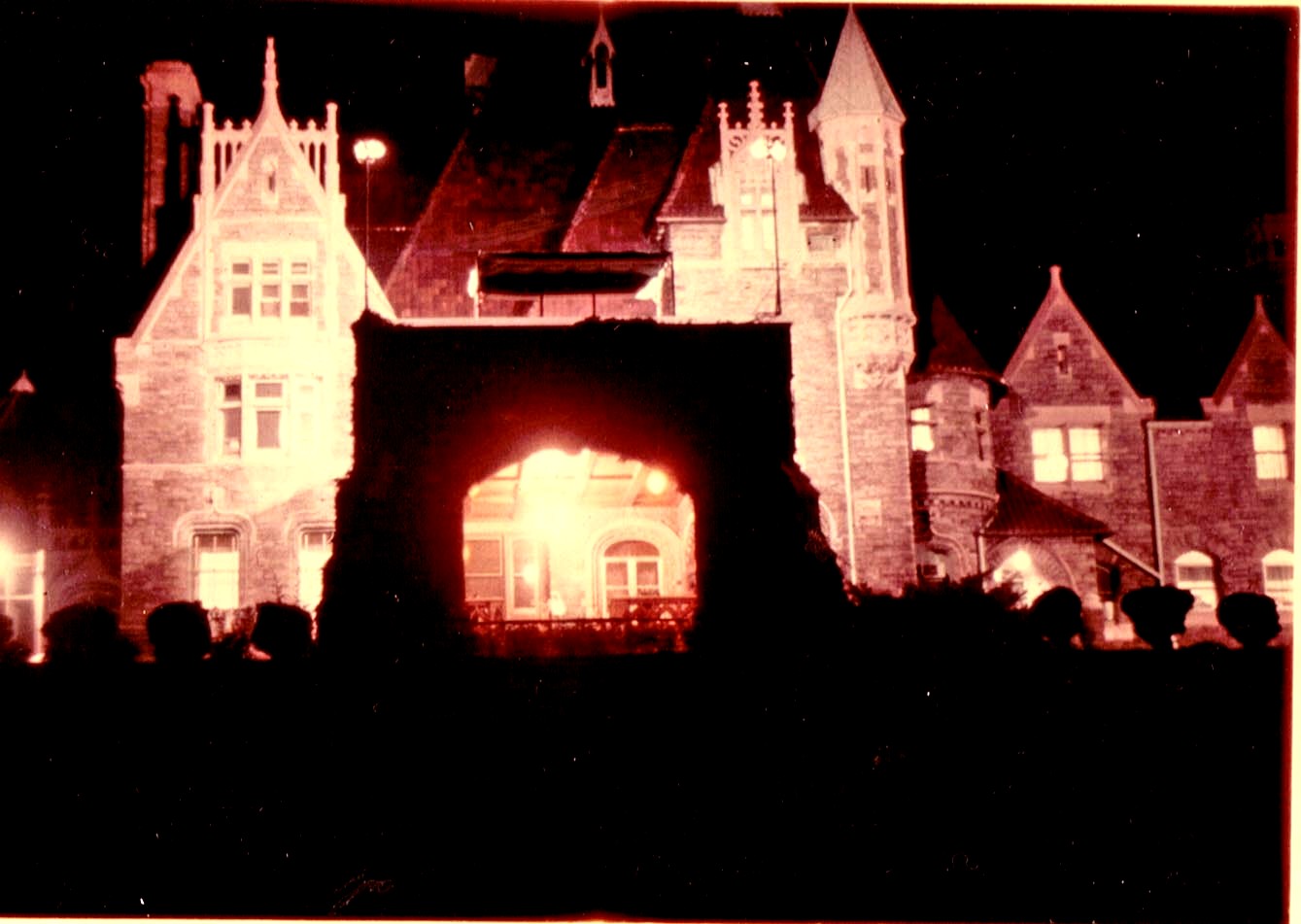
Woodmont's 3-story manor house, culmination of the aspirations and dreams of Alan Wood, has been described as
'the most outstanding example of French Gothic architecture in the area.'
(Moses King in his book, Philadelphia and Notable Philadelphians.)
To the careful observer the word "Peace" worked into the fancy copper grillwork atop the house is plainly visible, as is the cornerstone at the right of the front entrance bearing the word "Woodmont", the initials "AMHW" and the date of its erection 1882.
The manor house is of native stone on a steel structure and the cellar is hewn out of solid rock. Natural wood-burning fireplaces in most of the rooms are an indication of the period Woodmont was built. Intricate stone and wood carvings adorning the exterior and interior were done on the property by craftsmen brought from Italy by Mr. Wood. Woodwork throughout the house, excluding the Library, is oak. Tudor figures lend to the existing atmosphere of peace and serenity.
'Massive bronze doors lead from the porte cochere and vestibule into the Great Hall. The flying buttress ceiling is 45 feet high. Looking up under the gallery, dovetail wedges of matching oak, used to secure the wide panels, are typical of the meticulous artistry that makes Woodmont a place of beauty.'
(Moses King in his book, Philadelphia and Notable Philadelphians.) 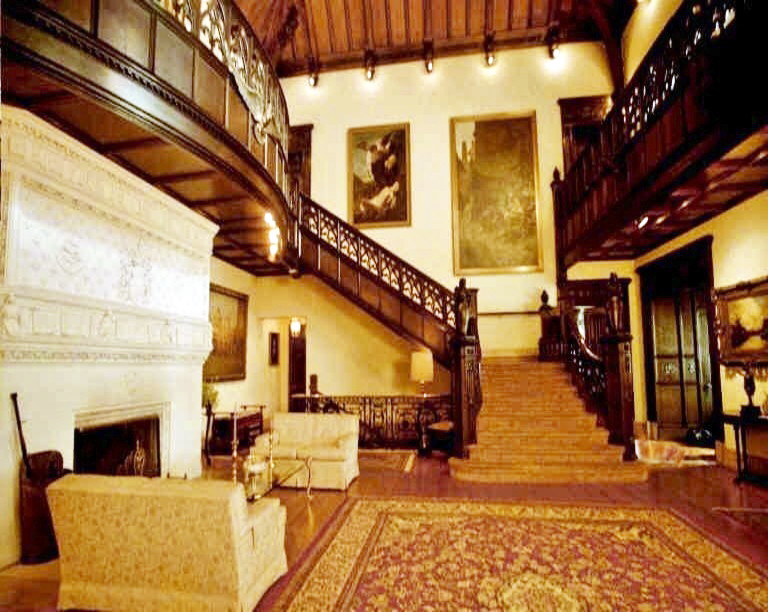
The magnificent Caen fireplace facing the front entrance was imported from France A nearly life-size photograph of Father and Mother Divine on the gallery above the fireplace was taken at the Divine Lorraine Hotel in Philadelphia in 1950 during an anniversary celebration of Their Marriage.
This room is used for informal gatherings. A large photograph of Father and Mother Divine was taken at the Tarrytown, New York, estate in 1948.
The entire room is paneled in rose mahogany. An inscription over an alcove from the English poet, Shelley,
'For love and beauty and delight there is no death nor change,'
speaks of the philosophy of Father Divine.
Used for conferences and matters relating directly to Father Divine's Work, the high and the low are met by Him in this room with equal respect and consideration. Entrances from both the Music Room and the Library lead into the Study as well as a private entrance from the outside.
Oak paneled walls are secured with wooden pegs as are the floors. The ceiling is Jacobean, varying in design from ceilings in the Chapel Dining Room and the Master Bedroom. An original painting, the work of Victor Alfred Fournier, a French marine and landscape painter, is the most outstanding of the collection at Woodmont.
As its name implies, the dining room resembles a chapel. Much of the room was imported from England. The overmantel of the fireplace is made to resemble an organ front. On the mantelpiece, Tudor figures bend in an attitude of prayer under Gothic arches. The figures of the saints that stand in niches around the room close to the ceiling and part of the panneling were imported from Avion, France in 1929 by the McNeils. In Avion the Chapel of Pope Innocent was being demolished as the Pope had long since returned to Rome, Italy. He chose to reign from Avion for a period because there was disagreement as to who was the Pope at that time. The new panneling and figurines blended in beautifully with the original.
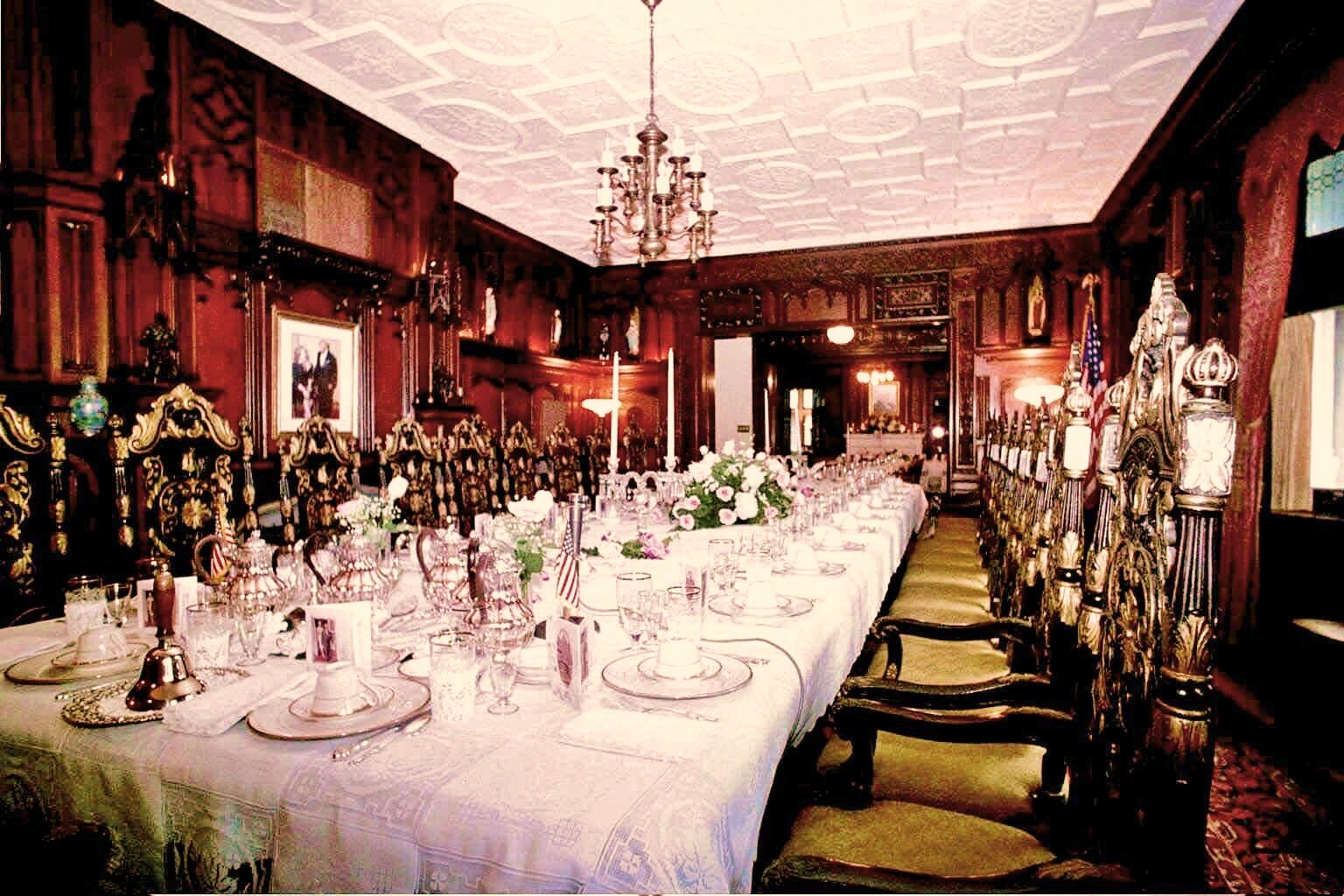
The massive table, now extended to its full length, and hand carved chairs are appropriate for the use of Father and Mother Divine as Holy Communion furnishings.
As it was Mrs. McNeal's wish that this room remain as she had furnished it, so it remains, the only room in the manor house not furnished by the church. An organ had been added for the use of the choir, a camera for closed circuit television and recording equipment for conveying Father Divine's Sermons in His own voice to the people during Services. Services conducted in Peace Mission churches around the world and relayed by tape are also heard periodically.
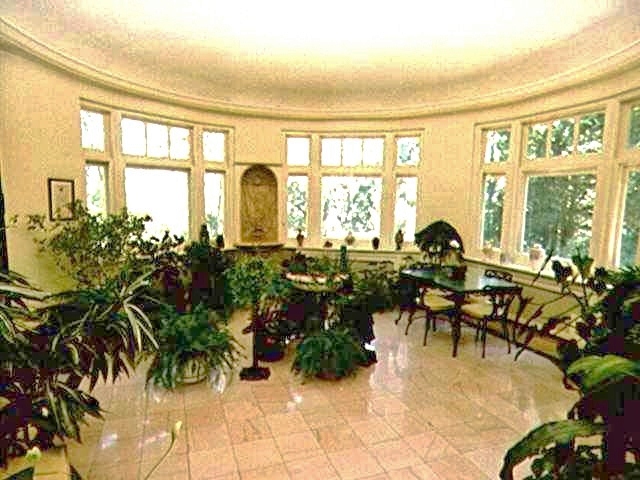
This delightfully sunny room is filled with plants grown in Woodmont's greenhouses. A large wrought and cast iron door leads down steps to the gardens and the Shrine.
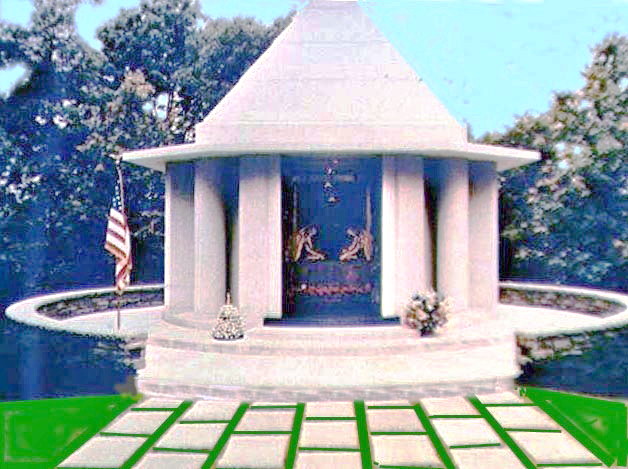
The Shrine, erected to the Life, Work and Words of Father Divine by the combined churches of the Peace Mission Movement, was dedicated September 10, 11, 12, 1968 A.D.F.D. Its purpose is twofold, providing a sanctuary in which the Body of God is enshrined and acting as a reminder of His covenant fulfilled from the beginning of biblical history.
Reminiscent of the Tabernacle containing the Ark of the Covenant, the Shrine brings the ancient and modern together. Its powerful simplicity denotes the Personal Life of Father Divine; its atmosphere of peace conveys His serenity and humility; its strength and purity of line, His staunch stand for the high moral and spiritual values of life made clear by His own example, which are the foundation stones of the Peace Mission Movement as it stands today, a bulwark of faith in a troubled world.
Father Divine's Words incised onto interior walls speak of the covenant:
'Condescendingly I came as an existing Spirit unembodied until condescendingly imputing Myself in a Bodily Form in the likeness of men I came, that I might speak to them in their own language, coming to a country that is supposed to be the Country of the Free, where mankind has been privileged to serve GOD according to the dictates of his own conscience - coming sponsoring this Peace Mission and this spiritual revelation in the hearts of the children of men, and establishing the Kingdom of GOD in the midst of them; that they might become to be living epistles as individuals. seen and read of men, and verifying that which has long since been said: 'The tabernacle of God is with men, and he shall dwell with them, and God himself shall be with them, and shall be their God, and they shall be his people.''

Open house at The Mount of the House of the Lord is every Sunday from the first Sunday in April to the last Sunday in October from 1 to 5 PM with the exception of one or two days during the last week in April and the First week in May. On these two days we are observing our religious holidays.
Exit the Schuylkill Expressway at Conshohocken. At the traffic light at the bottom of the exit ramp turn right onto 23 east. Pass two quick traffic lights and proceed to the top of the hill. Turn left at the traffic light onto Spring Mill Road. About 3/4 of a mile as you approach the Philadelphia Country Club Club House is Woodmont Road going left. Our mailing address is 1622 Spring Mill road which is the next left turn at Genko Lane but the main entrance that is used during open house and whenever we are expecting visitors is on Woodmont road. Turn left on Woodmont Road past three sets of iron gates on the right to the pair of double iron gates with the name Woodmont on the center post. Pass through the gates and you are at The Mount of the House of the Lord..
Alternate routs would be to use Conshohocken State Road to North on Spring Mill Road or Lancaster Avenue to Villanova and then North on Spring Mill Road to Woodmont Road.
Phone: 610-525-5598
************